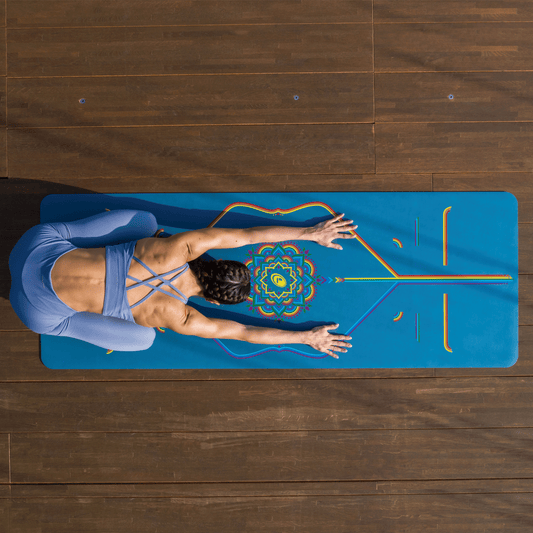Our planet has a plastic problem. The durability, longevity, and cost-effectiveness of plastics make them essential materials that can solve practical problems and improve lives. However, the very qualities that make plastics valuable also make them an ecological hazard, because there has never been a global strategy to deal with all the waste and pollution that they create.
It's a problem so vast that you may think there’s not much you, personally, can do about it. Refusing a plastic straw, for example, seems pretty trivial, but we’ve seen that when enough people do it, companies start making changes, looking for better ways to give their customers what they want. Small actions can become large movements that make a difference. Individuals, businesses, and governments all have parts to play in the solution to the plastic problem.
How did we get here?
'Plastic' is an umbrella term for a large variety of man-made materials. The first plastics were invented around the turn of the twentieth century. They were initially used in industry, then in the military during World War II. The household use of plastic really took off during the post-war boom.
The most common type of contemporary plastic is made by heating petroleum products to high temperatures in order to create strongly bonded chains of molecules called polymers. The almost limitless adaptability (of shape, size, weight, and durability) of these synthetic polymers is what makes plastics so widely used (from medical devices to aeroplanes) and useful to human lives. However, their chronic overuse for the sake of convenience is resulting in the pollution crisis we are now facing. Many plastics don’t biodegrade naturally, meaning that a large portion of all the plastic ever produced on Earth is still with us (79%, as of 2015, according to the BBC). Recycling seems like a good solution, but only a very small percentage (9%, per the OECD) of all the plastic produced is actually recycled . The rest ends up in landfills by the billions of tonnes or may make its way to one of five massive garbage gyres in the world’s oceans.
Many plastics don’t biodegrade naturally, meaning that a large portion of all the plastic ever produced on Earth is still with us (79%, as of 2015, according to the BBC). Recycling seems like a good solution, but only a very small percentage (9%, per the OECD) of all the plastic produced is actually recycled . The rest ends up in landfills by the billions of tonnes or may make its way to one of five massive garbage gyres in the world’s oceans.
Many of the plastics that end up in the ocean take an enormous length of time to decay, but they often break down into smaller and smaller pieces along their decomposition journey. These small pieces are consumed by marine life and may kill the animal or enter the food chain. The plastic fork that you use for 5 minutes and then throw away is now likely going to part of the planet for longer than your lifetime, because there really is no ‘away’ for plastic.
The single use that lasts forever
One of the biggest problem areas in plastic pollution, and a big focal point of the current spike in awareness, is what is known as ‘single-use’ plastic. That includes any product that is intended to be used only once and then discarded.
Drinking straws, the oft-cited example, seem so inconsequential but do add up to a lot of trash very quickly. But the biggest market for single-use plastics is packaging: soda and water bottles, grocery carrier bags, takeaway food containers, and almost everything that gets shipped anywhere.
The solution must come from a combination of actions. Governments must begin to ban single-use plastics, industry must find viable, cost-effective, biodegradable alternatives, and individuals must embrace a reduced plastic lifestyle.

Tell me something good!
Some progress has already been made!
Taiwan has announced plans to phase in total bans on single-use plastic bags, utensils, containers, and straws by 2030.
France has banned plastic packaging for fruits and vegetables, eliminate over one billion packages per year.
Single-use plastic bags are banned in quite a few African nations, including Rwanda, Mauritania, Eritrea, Morocco, and Kenya.
Plastic bags are also banned in Bangladesh and Sri Lanka.
Malaysia only allows the use of biodegradable and compostable plastic bags.
Plastic microbeads in cosmetics are now banned in the U.S., Canada, and the U.K.
England has banned plastic cultery, straws, stirrers, cotton buds, and polystyrene cups.
Several U.S. states, including California, New York, Oregon, and Hawaii have banned single-use plastic bags.

What can I do?
So glad you asked!
• Reduce your personal plastic consumption by rejecting the single-use mentality. Use your own water bottle, coffee cup, straws, and grocery bags. Check out these top tips from our partner Friends of the Earth for more ideas.
• Reuse packaging whenever possible. This might include using glass jars to store food in the fridge instead of buying disposable plastic containers.
• Recycle effectively. If you have household recycling in your community, review their guidelines so that you only put out items that can actually be recycled by your provider. Including non-recyclable items makes the process less efficient and less likely to be successful. Choose to buy items packaged in materials you know to be recyclable. If you do use any plastic (cups, bottles, plates) while you are out, bring them home so that they can be recycled.
• Support the efforts of environmental groups that lobby governments to take action by banning unnecessary plastics and encourage industry to invent better plastics or comparable alternatives.
• When shopping, choose to support businesses that are committed to going as low-waste as possible.
At Liforme, our yoga mats are made from natural, renewable rubber and biodegradable polyurethane rather than PVC. All our packaging and shipping materials are plastic-free. When it’s as important as the health of our planet, we can all find ways to do better.


 Pollution from single-use plastic packaging is a huge environmental problem that must be addressed by reducing the use of unnecessary plastic and investing in eco-friendly alternatives. Learn more about how we got into this mess and what you can do to help get us out.
Pollution from single-use plastic packaging is a huge environmental problem that must be addressed by reducing the use of unnecessary plastic and investing in eco-friendly alternatives. Learn more about how we got into this mess and what you can do to help get us out.


































